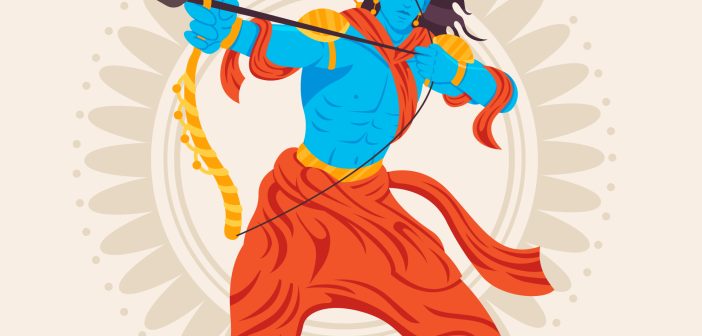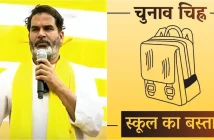Discover the intricate tapestry of India’s socio-political realm through our deep dive into the Ayodhya Ram Mandir Pran Pratishtha ceremony. Uncover the controversies, political undercurrents, and cultural impacts that define this pivotal event and how it shapes the nation’s discourse. Join us in unravelling India’s complex narrative.
The Ayodhya Ram Mandir Pran Pratishtha ceremony, scheduled for January 22, has become a focal point in Indian socio-political and cultural discourse. This event, marked by its religious significance, political undertones, and many controversies, offers a profound glimpse into the complex fabric of Indian society. This article will delve into the various aspects of this ceremony, examining its historical context, religious importance, and the controversies surrounding it, including the political, environmental, and commercial dimensions.
Historical Context and Religious Significance
The Ayodhya Dispute: A Brief Overview
The city of Ayodhya has been at the heart of a centuries-long dispute, primarily due to its religious significance in Hinduism as the birthplace of Lord Ram. This dispute reached a climax in 1992 with the demolition of the Babri Masjid, leading to widespread communal riots. The Supreme Court’s 2019 verdict favouring the construction of the Ram Mandir was a landmark decision in this prolonged conflict.
Religious Implications of the Temple
The construction of the Ram Mandir is not just a matter of religious pride for many Hindus but also symbolizes a historical rectification. It represents a physical embodiment of faith and the revival of Hindu cultural identity.
Controversies Surrounding the Event
Incomplete Construction and Implications
The decision to conduct the Pran Pratishtha ceremony before the temple’s completion has raised questions. Critics argue that this premature inauguration is politically motivated, aimed at garnering support for the ruling party. The Ram Mandir is still under construction, with the Garbh Griha (sanctum sanctorum) scheduled to be completed by December 2023. Critics argue that holding the Pran Pratishtha ceremony before the full construction is rushed and disrespectful. Critics argue that holding the Pran Pratishtha ceremony before the full temple is finished undermines its significance and appears rushed for political gain.
Personal Life of Prime Minister Narendra Modi
Given his controversial past associated with communal politics, Prime Minister Narendra Modi’s involvement in the ceremony has been scrutinised. His personal life and political career, intertwined with the Ayodhya issue, add layers to the event’s significance. Prime Minister Narendra Modi, who is not married, is scheduled to preside over the ceremony, raising objections from these groups. Some Hindu groups and individuals have expressed reservations about Prime Minister Modi performing the Pran Pratishtha due to his unmarried status. Traditionally, Hindu rituals are performed by married men. However, many others dismiss this notion as outdated and irrelevant.
Significance of the Chosen Date
The choice of January 22 for the ceremony is seen by some as politically calculated, potentially aiming to influence upcoming elections or to divert attention from other pressing issues. Some Hindu scholars have raised concerns about the astrological suitability of January 22, arguing that it may not be an auspicious day for such a significant ceremony. They suggest alternative dates based on the Panchang (Hindu calendar). The date chosen for the Pran Pratishtha, January 22nd, coincides with Makar Sankranti, a major Hindu festival. Some astrologers and religious figures have raised concerns about the astrological compatibility of the date with such a significant event.
Exclusion of Certain Groups
The Ram Janmabhoomi-Babri Masjid dispute had a long and complex history involving the Muslim community. While the Supreme Court verdict paved the way for the Mandir construction, some Muslims feel their perspectives and concerns have not been adequately addressed or accommodated.
The exclusion of certain communities and minority groups from the event has been criticized as a manifestation of majoritarian politics, potentially deepening societal divisions. The invitation list for the ceremony has been criticized for not including any prominent Muslim figures. This has reignited concerns about the potential for renewed Hindu-Muslim tensions, despite the Supreme Court’s verdict aimed at resolving the Ayodhya dispute.
Political Motivations
The involvement of political figures and parties in the event has led to accusations of using religion for political gains, sparking debates about secularism in India. Critics, particularly from opposition parties, allege that the BJP government is using the Ram Mandir ceremony to further its political agenda and consolidate Hindu votes. They argue that the focus should be on ensuring social harmony and inclusivity rather than political gain. They point to the extensive media coverage and grand celebrations as attempts to boost the BJP’s image and divert attention from other pressing issues.
Environmental Concerns
The construction of the temple and ceremony have raised environmental concerns, highlighting the tension between development and ecological preservation. The large-scale preparations for the ceremony have raised concerns about environmental damage, particularly waste management and potential strain on local resources.
Commercialization of the Event
The commercialization aspects, such as the sale of memorabilia and media rights, have led to criticisms about the commodification of religion and culture. Some critics argue that the Pran Pratishtha is being commercialized, with excessive marketing and merchandising surrounding the event. They believe this takes away from the spiritual significance of the occasion.
Security and Potential Unrest
Rejection by Many Political Parties
Several opposition parties have rejected the event, citing concerns over secularism and the politicization of religion.
Financial Transparency:
The Ram Janmabhoomi Teerth Kshetra Trust, responsible for managing the temple construction, has been criticized for a lack of transparency in its financial dealings. Some demand a detailed audit of the funds collected for the project.
Impact on Public Perception and Broader Discourse
Influence on Public Perception
The Ayodhya Ram Mandir event has polarized public opinion, with some viewing it as a triumph of cultural identity and others as a symbol of political opportunism.
The Role of Media in Shaping Opinions
The media has played a crucial role in shaping public opinion, with different outlets portraying the event in varying lights, influenced by their ideological leanings.
Conclusion
The Ayodhya Ram Mandir Pran Pratishtha ceremony is more than a religious event; it is a complex intersection of politics, religion, and culture. Its implications on Indian society are profound, reflecting the diverse and often conflicting narratives that define the country’s socio-political landscape. As India grapples with these issues, the ceremony will undoubtedly leave an indelible mark on its collective consciousness, shaping the discourse for years to come.




